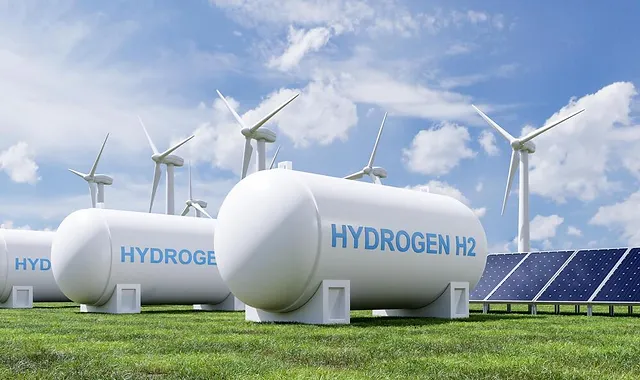India’s journey towards sustainable energy took a significant leap with the launch of the Green Hydrogen Hub (GHH) project in Pudimadaka, Anakapalli district, Andhra Pradesh. As part of the National Green Hydrogen Mission, this initiative will house the country’s first integrated green hydrogen production facility. Prime Minister Narendra Modi is set to virtually lay the foundation stone on January 8, 2025, marking a pivotal moment in India’s renewable energy roadmap and its ambition to achieve net zero emissions by 2070.
Project Highlights of Green Hydrogen Hub
Location and Scale
The GHH project spans a vast area of 1,600 acres, strategically positioned just 2 km from the Bay of Bengal. This joint venture between Andhra Pradesh New & Renewable Energy Development Corporation (NREDCAP) and NTPC Green Energy Limited (NGEL) entails a massive investment of ₹1,84,700 crore, with its peak funding phase anticipated in 2027.
Production Capacity
- Green Hydrogen: 1,500 tonnes per day (TPD).
- Green Derivatives: 7,500 TPD, including green methanol, green urea, and sustainable aviation fuel.
This substantial output is primarily intended for export, solidifying India’s position as a global leader in green energy.
Infrastructure Development
The project will feature:
- Green Chemical Zone: 2.5 million tonnes per annum (MTPA) capacity.
- Chemical Storage Terminal and Port Facilities.
- 7 GW Substation and an 80 MLD Desalination Plant.
The completion of this infrastructure is targeted for 2032, laying a robust foundation for India’s green energy ecosystem.
Economic and Environmental Benefits
Job Creation
By 2032, the GHH project is projected to generate over 57,000 jobs, significantly boosting the local economy and fostering regional development.
Environmental Contributions
Aligned with India’s goal of achieving 500 GW of non-fossil energy capacity by 2030, the GHH project will:
- Facilitate decarbonization across industries.
- Promote sustainable energy practices.
- Propel the nation towards energy independence and net zero emissions.
Utilities and Timeline
Power and Water Supply
- Power: Supported by the 400kV NTPC Simhadri and 800/765kV Anakapalli substations.
- Water: Freshwater sourced from the Yeleru canal and the desalination plant.
Development Schedule
- Common infrastructure development (roads, offices, waste management) is slated between May 2025 and December 2026.
The Green Hydrogen Hub represents a bold stride toward reshaping India’s energy landscape. By prioritizing renewable energy and fostering innovation, this project sets the stage for a cleaner, greener future. It serves as a crucial milestone in achieving energy security, reducing carbon emissions, and positioning India as a global powerhouse in sustainable energy solutions.




